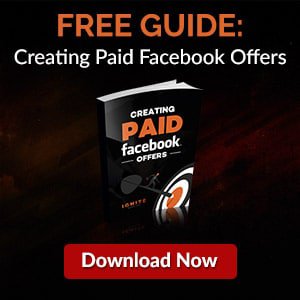

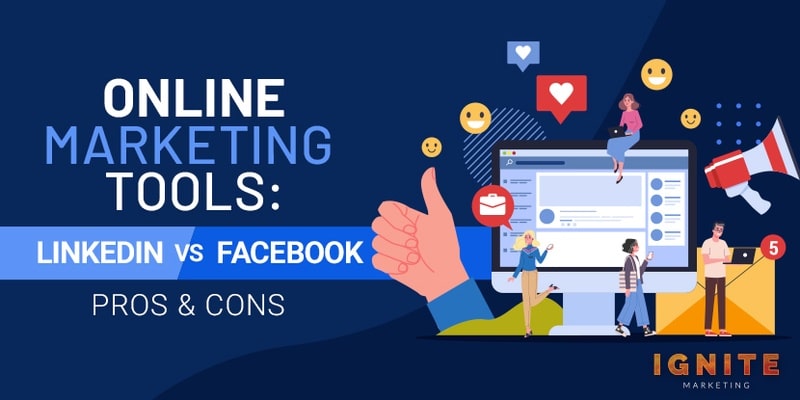
You may have heard of Facebook and LinkedIn and could also be a registered member there. But have you used the respective platforms to market your products or reach out to people you don’t know for business/professional reasons? Do you know what the pros and cons of marketing on those platforms are?
LinkedIn’s “professional” approach to social networking makes it ideal for building business links. Facebook helps create a “brand”. Both platforms offer online marketing options, but with twists. LinkedIn users reciprocate well to digital items. Facebook’s users are receptive to consumer offerings.
In this article, the online marketing potential of two major social networking websites, LinkedIn and Facebook, will be looked into in-depth. Read on to get a comprehensive view of the online marketing options and tools with both platforms, the pros and cons, and more.
![]()
Built for working professionals looking for new job opportunities or career changes, LinkedIn offers a unique user base and multiple online marketing possibilities. Having started its journey as a platform for professionals to post resumes, LinkedIn has metamorphosed into a social site like Facebook.
With around 250 million active monthly users (as of 2021), LinkedIn is undoubtedly an excellent place for online marketers to reach potential consumers with their different products and services. The site’s massive popularity among professionals renders it almost blasphemy not to use it for your digital marketing requirements.
The following are the reasons why LinkedIn is a wonderful place for online advertising or promotion:
LinkedIn is a social networking site for professionals. In other words, the audience on the site is high value.
There are hundreds and thousands of influencers on the website, alongside several major decision-makers from various businesses and companies. The users also boast higher average salaries and better education than your average Facebook crowd, making them quite attractive for advertisers.
Also, unlike Facebook, LinkedIn is “professional”. People on LinkedIn are more likely to connect with you even if there’s no personal bond or you don’t know each other from before. Not to mention, LinkedIn permits 30,000 first-degree or direct connections without the need to create a business page. On Facebook, you can have only up to 5,000 friends.
To make connections, however, you must offer a reason or some value to the user. For instance, offering free advice or linking to an article will encourage people to connect with you. Random connection requests with no purpose or mutual benefit will likely get rejected or ignored.
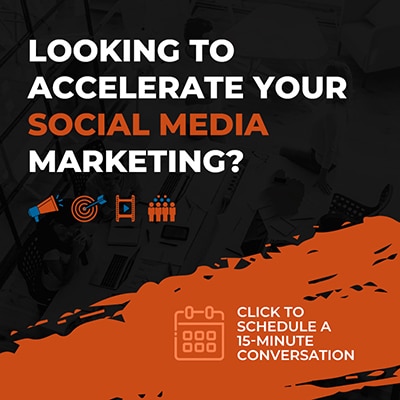 Precise Targeting
Precise TargetingLinkedIn provides advertisers on its platform myriad options to target the exact audience they want to connect with. As a LinkedIn advertiser, you can target people based on an array of criteria, which include the user’s:
Sponsored InMail is LinkedIn’s trump card. You could use it for sending personalized business messages. The tool is ideal for promoting products and services, content, encouraging registrations for events, etc. Check out Clientverge for the best marketing services.
A minor drawback to InMail is you cannot send them from a business page. For individual marketers, it’s a godsend. Organizations that want their business message to feel personalized and human will also fancy Sponsored InMail. And if the InMail correspondence is from a company’s CEO or sender with a comparable job title or name recognition, the outcome will be solid.
Sending too many InMail messages or allowing an intern or junior employee to communicate the marketing message should be avoided.
Like every other social media site, LinkedIn offers a plethora of ad formats or templates to choose from. LinkedIn advertisers can use promoted content, video, or image ads, and more. It didn’t have the video option earlier. After public outcry, videos got thrown into the mix too.
If you have a story to tell, either video or image ads can do the job. Video ads are particularly ideal for building remarketing audiences. Promoted content ads help you connect with users keen on buying your offering but who may be on the fence for some reason. The content-based advert can help convert them into customers.
Also, setting up a LinkedIn ad is an easy and swift process. Typically, it should not take you more than five minutes to get an advert live on the platform – even if you have never used LinkedIn to market your products before. Marketers who would like to roll with their marketing campaigns as quickly as possible would appreciate LinkedIn’s swiftness.
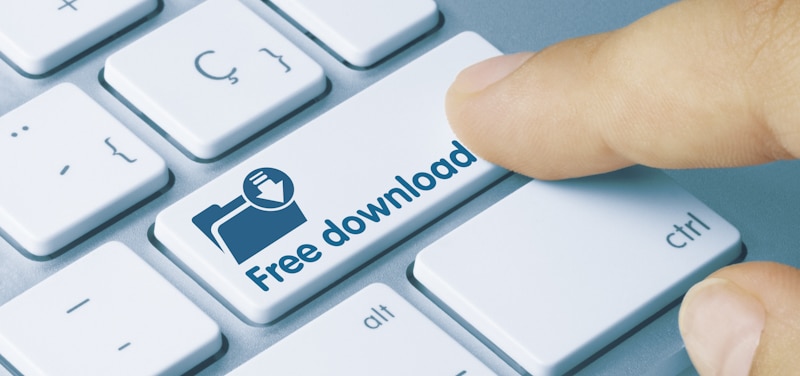
LinkedIn is perhaps the only social website that affords massive traffic, views, and connections without spending a dime on boosting posts or buying ads. In other words, if you offer the site great valuable content, the platform will display it to thousands of users not part of your connections. The content can be in the form of short status updates or full-fledged articles.
Articles posted on LinkedIn have garnered thousands of page views and social shares within a few hours of posting. And to gain such traction, you need not necessarily have a “following” on the site or reputation off it. Even the very first article you publish could gain serious footing if it’s quality and relevant to the site’s users.
Not every article you publish on the site will get you thousands of footfalls. But even if they attract a few hundred eyeballs (which is entirely possible), it’s free publicity, nonetheless. And the content need not be only in the text format. Even videos could be used to share your thoughts, knowledge or spread the message in general. Live streaming through LinkedIn Live is also an option.
Though Facebook lets you send ad messages to its users, no one does it better than LinkedIn. Promotional messages are so intertwined with the experience of using LinkedIn that every user of the platform would have received ad messages in their inboxes a few times at least.
Messages facilitate business solicitations and allow you to start new relationships or develop existing ones, build affinity, and more. All of this is feasible thanks to the platform’s precise targeting options, as discussed above.
LinkedIn is no doubt a solid marketing platform choice for a lot of businesses. But then there are a few shortcomings as well. Here are some of the cons of marketing with LinkedIn.
An attractive target user base comes at a cost. Compared to Facebook, and most other social networking sites, advertising costs on LinkedIn are relatively high. While the advertising costs could differ across advertisers, the minimum bid for CPC (cost per click) and CPM (cost per impression) campaigns is $2. On average, businesses pay $6.59 for every 1000 impressions and $5.26 per click.
Generally, people use LinkedIn when they are on the hunt for a job. Unlike Facebook, Instagram, or Twitter, LinkedIn users are not on the site looking to make friends or solicit marketing messages. They have an objective and are focused on that. In other words, a relatively significant chunk of the site’s active users may not be interested in your products, irrespective of how hard you try.
While setting up an ad on LinkedIn doesn’t take much time, the clunky interface and the overall ad implementation mechanism could bog down the experience. For instance, duplicating ads or ad campaigns easily and quickly is a challenge. There isn’t any duplication tool that makes setting up multiple ads for testing purposes easy.
Also, unlike Facebook, LinkedIn doesn’t have a media library. Therefore, each time you want to make a fresh ad or use another image for an existing ad, you’ll have to re-upload the image.

Facebook began as a social site to help people connect with family and friends. At its core, it’s still that. But being the third most visited website globally (as of Jan 2021), the site’s purposes or scope have indeed multiplied or diversified.
As a result, businesses view the platform as a potent marketing tool. Pretty much every institution – online or offline, profit or non-profit – has a Facebook page.
Individuals and corporations use Facebook to create their brand identity. They use the platform to showcase their non-corporate side and be more accessible to their patrons. Through their Facebook pages, they share links, videos, images, and everything that helps them entertain, educate, and connect with their followers.
The following are some of the biggest positives of marketing on Facebook:
Like LinkedIn, Facebook offers you different methods to advertise your offerings and fine-tune your marketing campaigns in multiple ways. You can:
Since Facebook gathers a lot of data about its users, its targeted advertising program is class-leading – on par or better than LinkedIn, depending on how you use it.
Pretty much any variable could be employed to make your ads a lot more targeted. For example, if a person moved cities and you have a business in the area the individual moved to, customize your Facebook ad to target people who moved to your region recently.
Facebook offers multiple main ad templates and tools. The adverts that show on your screen’s right side represent the most traditional form of online advertising. These “marketplace ads” have a headline, image, and a link that takes the user to the advertiser’s website, mobile app site, or Facebook page.
Besides the more “conventional” ads, Facebook also lets you promote your posts, which is more typical of the platform. The posts you promote land up in the timeline of users who do not follow you on Facebook, creating more visibility for your posts and increased chances of them liking your page and receiving your future posts on their timelines organically.
You can choose who to promote your posts to. Your existing fans and their Facebook friends are the likeliest to see your promoted posts. Also, suppose you’re not able to reach your current followers organically due to the sheer number of pages they may be following or their lack of interaction with your earlier posts. In that case, Promoted Posts will help you reach them more effectively. The budget you set for your promotion determines your promoted posts’ reach.
You can advertise on Facebook for as little as $1 per day to hundreds and thousands of dollars daily. There’s no upper limit as such. However, for minimal engagement (clicks, likes, shares, etc.), look to spend a minimum of $5 a day. That’s still much lower than what you could end up spending on LinkedIn.
You could carry out ad campaigns based on a per-click or per-impression basis. Facebook’s advertising tools show you the bids similar to yours, so you know where your bid(s) stands. Also, you may cap the total amount you spend on ads every day so that you don’t overspend or exhaust your advertising budget in a short period.
If you have physical products to sell, Facebook Marketplace could offer tremendous bang for the buck. It’s Craigslist embedded into Facebook.
For e-commerce retailers and businesses that are into products, a shop in the marketplace could help reach many people in their region. When you set up a shop and list your goods, the items become searchable by any user who actively searches for the products in the Facebook online market.
As alluded to before, Facebook is a platform where marketers can cut loose with their marketing messages or have some fun.
A smartphone manufacturer, for instance, can use the site to promote their latest offerings and their upcoming releases, discuss in-depth about their products, and even mock nonsensical industry trends.
Facebook users are generally not uptight or take offense at jocular messages. They’ll enjoy the subtle humor now and again. Such tongue in cheek may not fare well on LinkedIn, however.
Just make sure you don’t go overboard with the fun messages and posts on Facebook. You do not want your audience not to consider you a serious business.
If you’re convinced Facebook is the right platform for your online marketing needs, don’t pull the trigger yet, at least not before reading a few of the negatives/drawbacks attached to marketing on the site.

The variety of ad formats is both a good and bad thing. The major drawback to it is that there’s a lot to explore.
Ad type, targeting, micro-objectives, images and videos to choose, etc., can make even an experienced marketer feel like a novice. You could use a Facebook ad for “awareness”, “consideration”, “conversion”, and so much more. Determining the ad’s objective is usually the stumbling block for most newbie Facebook marketers.
If you do not spend quality time learning the different ways you can advertise on Facebook and rush through the process, you may end up with a mediocre Facebook marketing campaign.
The ad format or how creatively to present the ad to the target user is the next challenge. Video, photo, slideshow, carousel, canvas, etc. – there are just too many to choose from. And even if you opt for a particular format, further deliberation will be needed.
The 2019 Facebook-Cambridge Analytica scandal concerning the procurement of personal information of several million Facebook users without consent has caused a dent in the site’s general reputation and trustworthiness. Then there were also allegations of the site tweaking its algorithms to give a more significant push to paid posts and significantly reduce traditional posts’ visibility.
All of this did not hugely impact the site’s popularity. The site’s users have not changed their attitude toward the online social network. But the events have certainly made people think twice before investing their time and energy into Facebook advertising. You may want to look into that aspect too.
The goal of this detailed comparison post is not to choose a winner between LinkedIn and Facebook. The objective is to list both their positives and negatives so that you could choose the platform that suits your requirements the best. Both sites have their positives and negatives.
Facebook is flexible, powerful, and has a more varied user base. LinkedIn, on the other hand, is more focused on the kind of users it caters to. Therefore, the products and services that might appeal to Facebook users may not necessarily click with LinkedIn, and vice versa. At the same time, some commercial offerings may do well across the platforms.
Test the waters first before allocating a significant chunk of your advertising moolah for Facebook or LinkedIn. If you’re looking to sell products to general consumers, Facebook is a better choice. It’s relatively inexpensive too. Digital products, such as software applications or courses, are likely to do well on LinkedIn.
